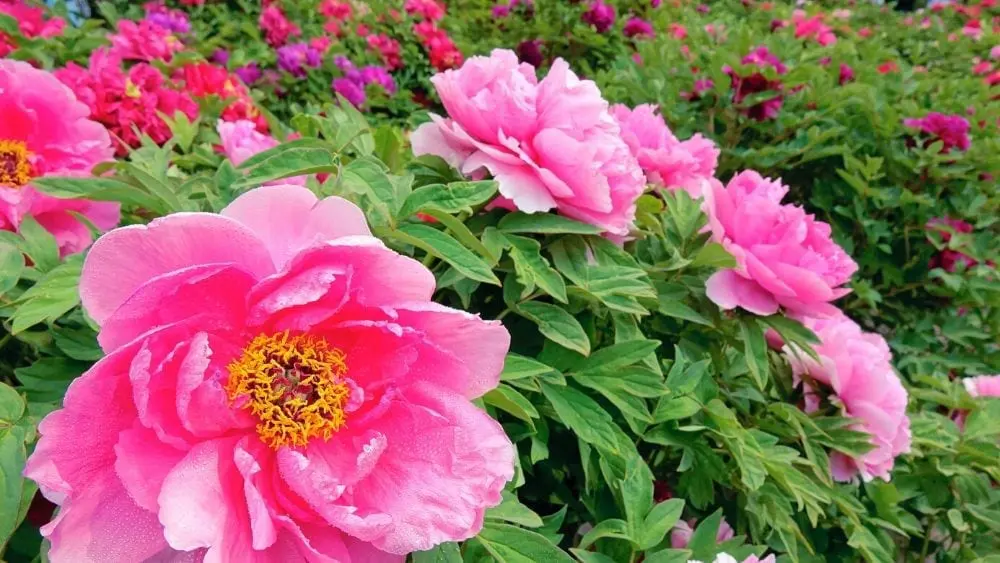
Our actions affect the living world around us. The well-being of animals (including us humans!) is inextricably tied to the well-being of our planet. More people are using natural resources than ever before in the history of our planet. Many standard yard maintenance practices are focused on convenience and aesthetics, and not on environmental impact. Fortunately, with some smart planning, it is possible for homeowners to maintain their yards with beautiful results while reducing negative impact on the environment and even benefitting it.
1. Conserving Water
The water used for irrigation is groundwater supplied by a local aquifer. Populations depend on aquifers more heavily during times of drought, which is why it is so important to carefully manage the use of groundwater. The homeowner’s most significant use of groundwater is irrigating the landscape. Fortunately, there are a number of ways to reduce use (and your bill!) without causing the yard to suffer.
Rainwater Harvesting
Homeowners can collect, store, and use rainwater to maintain their yard. This can be done aboveground by connecting rain barrels to the home’s gutter system, or underground by creating catchment pools.
Rain Gardens
By planting flora that prefer wet conditions in areas where water pools regularly or after rain, homeowners can create a beautiful, self-sustaining rain garden.
Xeriscaping
Xeriscaping is the process of designing and installing a landscape that does not need additional irrigation. Plant tough, drought-tolerant plants, such as certain grasses and succulents, and arrange them according to their water needs and the natural water supply.
Terracing
If a yard naturally slopes, rainwater can be prevented from running off or eroding the soil by building a terraced garden. This also adds considerable value to the property.
Mulching
No matter what kind of landscape is installed, using a thick layer of organic mulch will look nice and prevent water from evaporating from the soil so quickly and provide plants with extended moisture. An added benefit is that organic mulch will break down over time and improve the quality of the soil.
2. Use Native Plants
Plants that are native to the area are able to thrive without much help from you. This means homeowners can spend considerably less time and money on their yard in the long run, as well as see an immediate positive impact on their water and maintenance bills. Native plants are also resistant to local pests and diseases, while benefiting local pollinators and wildlife. Biodiversity is essential for an eco-friendly yard!
It is worth noting that the term “native” in the United States only applies to plants from a specific region that were already found there prior to European settlement. There are very few, if any, plants that are native to an entire state, country, or continent. You can find a local landscaper who specializes in native plants, or you can do it yourself. A great way to start is by contacting your local Native Plant Society.
3. Composting
Composting is what happens when wet and dry organic matter, such as plants and vegetables, decomposes. The end result is humus, the nutrient-rich component of soil that plants adore. This process is wonderful because it reduces kitchen and garden waste while creating a wonderful source of nutrition for the garden. Plus, you’ll never need to purchase compost from the store because you’ll already have a very local source! Some cities and communities have composting programs or offer free composters to residents. Do some research to see what your city offers.
If you decide NOT to get your own composter, you should still utilize compost to improve the health of your soil. Mix in compost when planting or transplanting, and use a natural topdressing compost to reduce watering and fertilizing needs.
4. Using Groundcovers
Approximately half of the groundwater used for yard irrigation is used solely for the grass lawn. The majority of turfgrasses used for residential yards in the United States are not native to this country and require a lot of resources (such as water, fertilizer, fungicides, insecticides, and fossil fuel) to maintain. HOAs across the country are increasingly allowing groundcovers like Perennial Peanut, Creeping Fig, and Asiatic Jasmine in place of grass. These low-maintenance alternatives to turfgrass don’t require a ton of water or upkeep, and they aren’t vulnerable to as many diseases and insects as grass.
5. Avoiding Chemicals
Chemicals in the landscape are risky business. Many insecticides are non-selective, meaning they will kill everything in their path. In some cases, the plants do not absorb all of the insecticide and what is left leaches into the groundwater. The same is true of fertilizer, which may leach nitrates into the groundwater. This has negative health effects on people (especially infants), animals, and fish.
Going eco-friendly in your yard does take some commitment, but we guarantee it is worth it! Your eyes, wallet, and planet will thank you for it. If you’re still just dreaming about a yard to call your own, you can browse the latest new homes (with yards) in your area on NewHomeSource.com!

For the last 16 years, Rachel Kinbar has been a writer of articles, blog posts, white papers, essays, infographics, web copy, sales copy, scripts, poetry, lyrics, and more. She has keen research skills that she applies to a wide variety of topics, and she especially loves topics related to design, history, and sustainable living.
 Get to Know Crystal Falls in Leander, Texas
Get to Know Crystal Falls in Leander, Texas